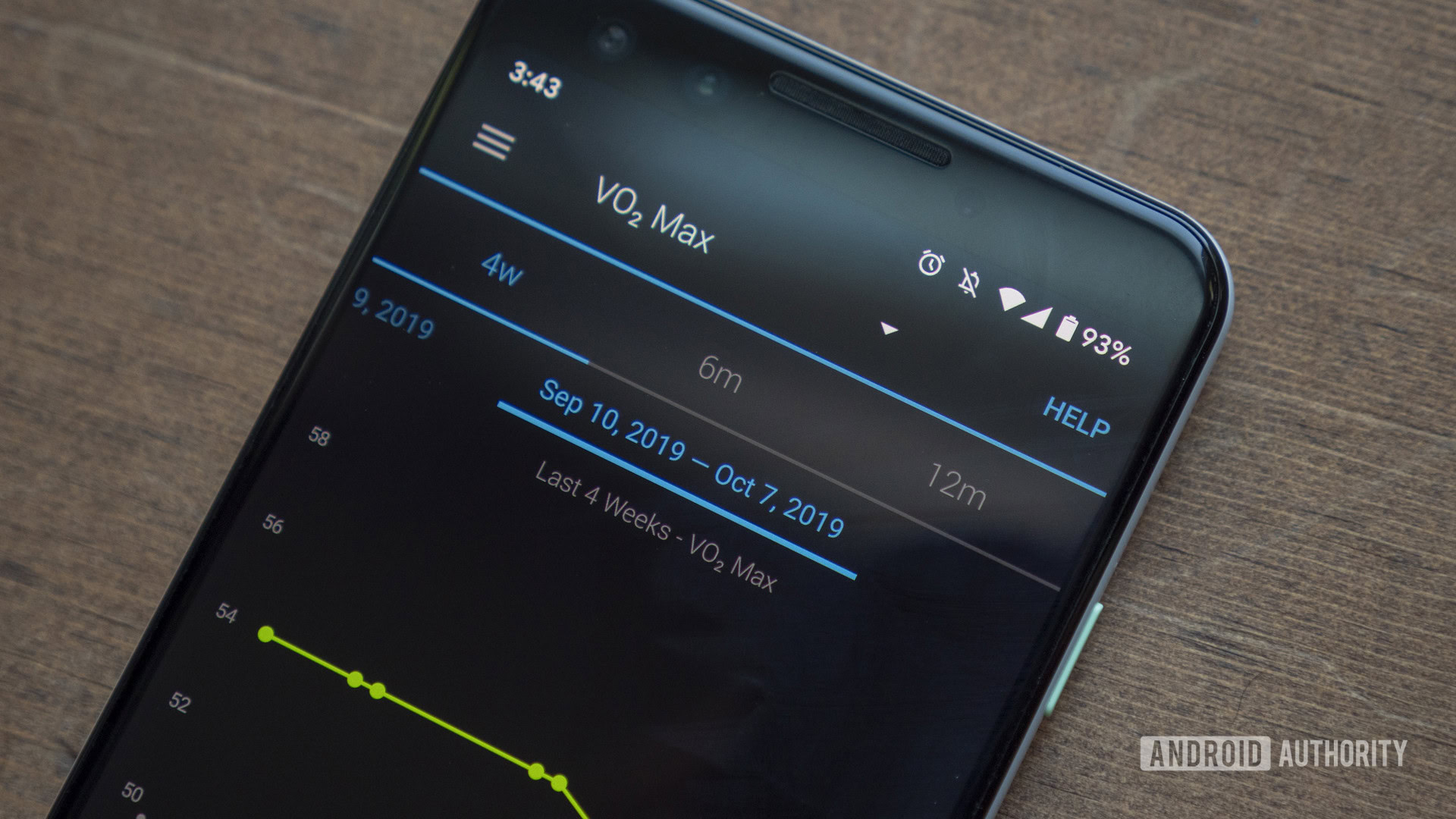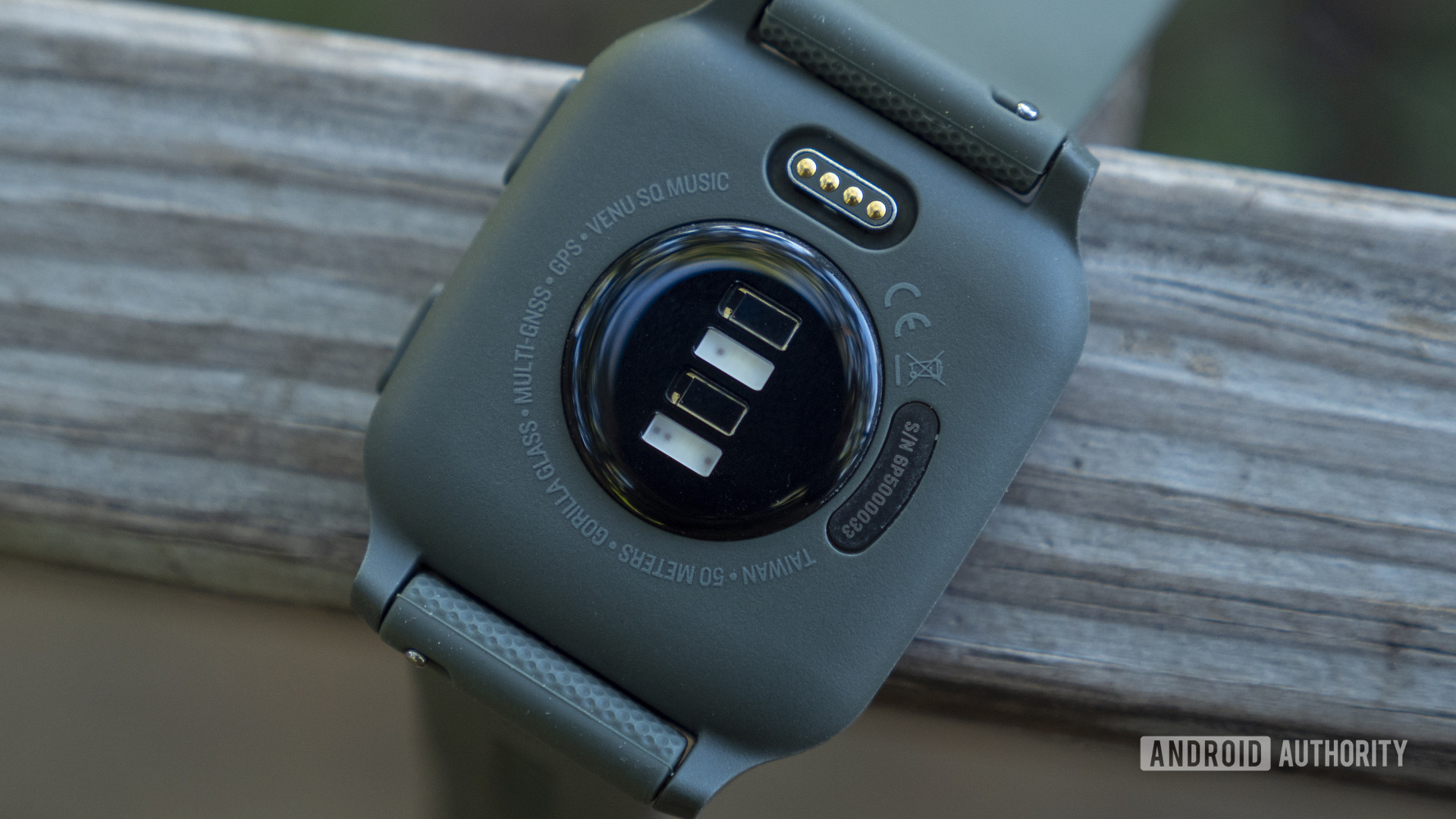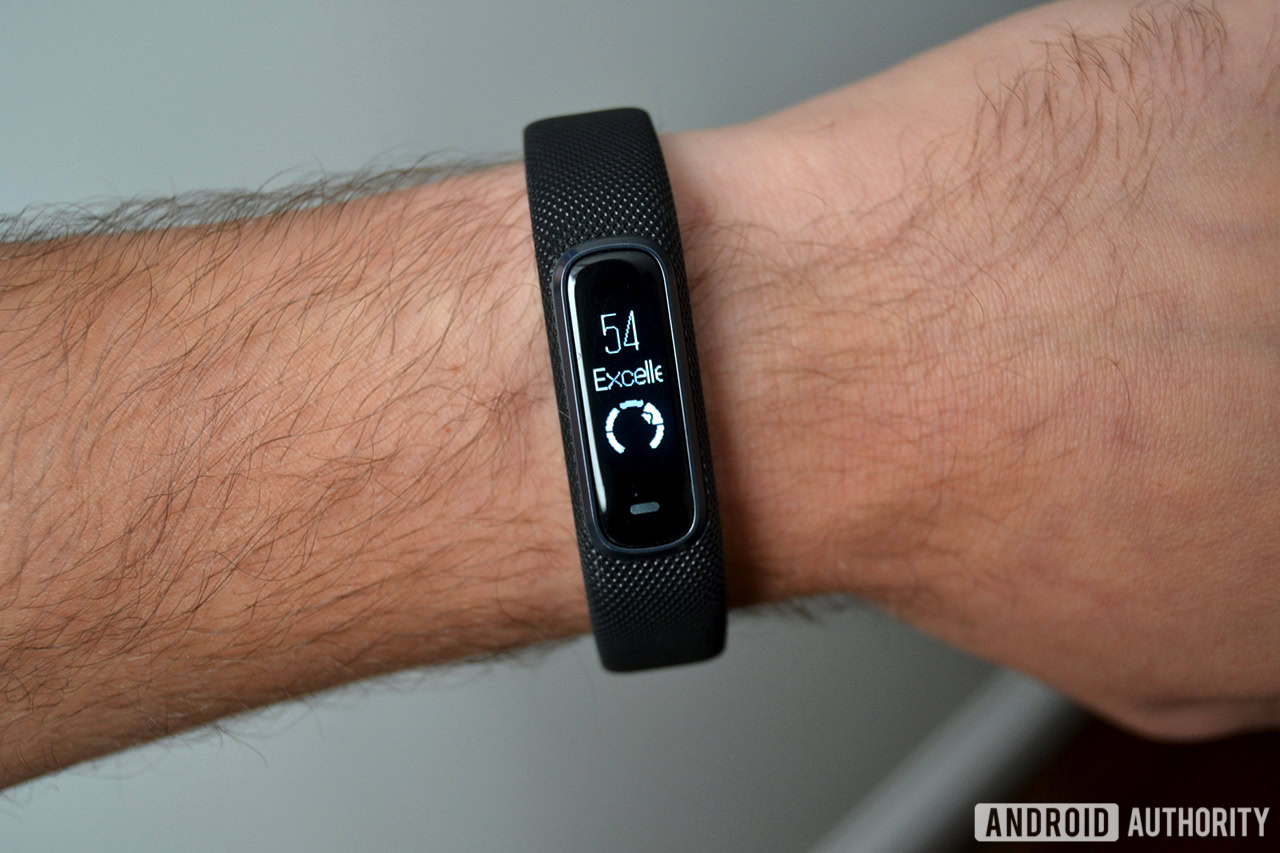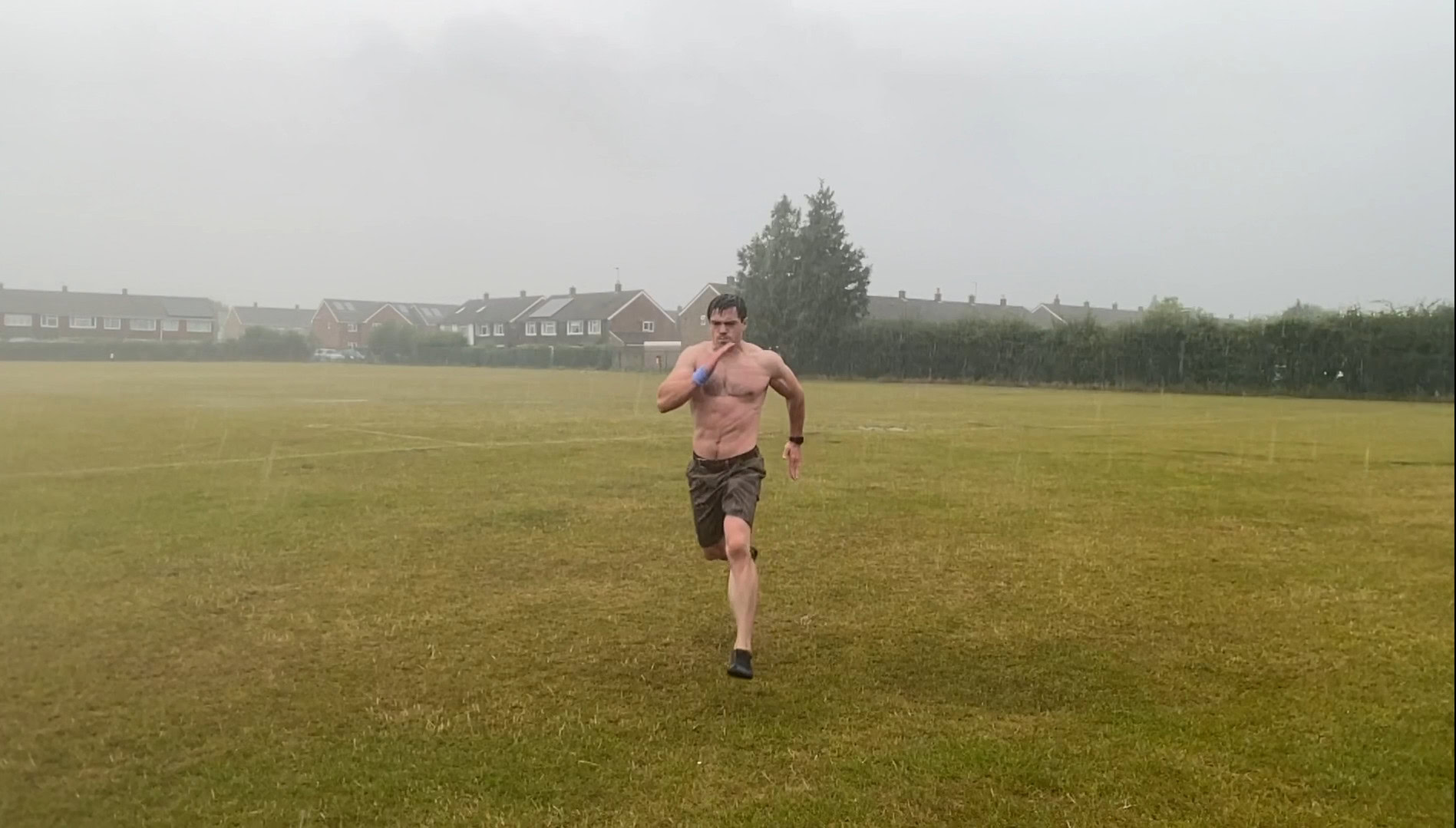Affiliate links on Android Authority may earn us a commission. Learn more.
What is VO2 max, and why is it a critical measure of performance?

Your body needs oxygen to move, think, digest food, and otherwise do anything. This important fact makes VO2 max such a useful measure of fitness. Your VO2 max is the amount of oxygen you’re able to utilize during training. A higher score correlates with greater aerobic fitness, more energy, faster recovery, and better overall health.
We’re taking an in-depth look at how VO2 max is measured, how accurately fitness trackers measure it, and what you should do about your numbers.
QUICK ANSWER
Your VO2 max conveys the maximum volume of oxygen your body can consume in one minute. It is a significant metric of cardiorespiratory fitness and an important indicator of performance capacity.
JUMP TO KEY SECTIONS
VO2 max explained

VO2 max is also called maximal oxygen consumption, maximal oxygen update, or maximal aerobic capacity. The figure represents the amount of oxygen you’re able to consume in one minute per kilogram of body weight (mL/kg/min).
This, in turn, means greater delivery of oxygen to the muscles during exercise. It is dependent on several factors: the amount of oxygen you draw in on each breath, the arteriovenous oxygen difference (the quantity of oxygen taken up from the blood by tissues), the number of red blood cells, your maximal cardiac output (Qmax), and more.
VO2 max serves as a predictor of aerobic performance. This includes long-distance running as well as other endurance activities. These activities rely on the aerobic energy system (instead of the phosphagen lactic acid or ATP-creatine systems). In plain English, you deplete all the readily available energy stores in the muscles and bloodstream and must begin burning fat stores for more fuel. You can continue to do this indefinitely, as long as you maintain a steady pace. This is what we mean by the “fat-burning zone.”
The better your VO2 max, the faster you will be able to go without burning out
However, if you attempt to run faster and your heart rate exceeds a certain point, you will be forced to switch back to an energy system that relies on available energy stores. This is when we start to feel the gradual build-up of hydrogen in our muscles that forces us to slow down again. (In truth, we use all three energy systems, at all times, to varying degrees.)
In this way, VO2 max is directly linked to the anaerobic threshold: the point at which we must switch to anaerobic (less efficient) energy systems. The better your VO2 max, the faster you will go without burning out.

VO2 max is linked with the density of mitochondria. Mitochondria are the energy factories of the cells, responsible for roughly 95% of your energy needs. These are the worker bees turning fat, glucose, and amino acids into usable energy in the form of ATP.
Also read: The best running watches you can buy
Training can cause changes in both the number and efficiency of mitochondria on a per-muscle basis. If you do a lot of long-distance running, you will see an increase in mitochondria, specifically in the leg. Rowers might find they have a proportionately larger quantity of mitochondria in the lats/arms. Thus, a rower might get a higher VO2 score when rowing versus running.
Seeing as we also utilize the aerobic system during everyday activities, it should come as no surprise that a better VO2 max also correlates with better general health. For example, a higher VO2 max predicts improved brain function. While a correlation does not establish causality (exercising also enhances cognitive function, so it’s fair to assume that greater oxygen delivery to the brain could improve performance.
How is VO2 max measured in a lab?
As you are probably already sensing, this is a rather complex figure to calculate, dependent on many factors. The only way to get a truly accurate reading of an athlete’s VO2 max is through testing at a lab.
During this test, an athlete runs on a treadmill or cycle ergometer. Gradually, testers push the athlete to the point of total exhaustion. A technician takes several measurements during this time. These include factors such as ventilation and the oxygen/carbon concentration of the athlete’s inhaled and exhaled air. In other words, they measure precisely the amount of air being taken in and how much oxygen is removed from that air.
The athlete reaches his or her VO2 max when oxygen consumption peaks at a steady rate. It is a grueling test!
Fitness trackers and other tools for measuring VO2 max

So, how is it that fitness trackers also claim to offer an estimated VO2 max?
The key thing to recognize about the VO2 max score generated by your Fitbit or Garmin device is that this is very much an estimate. You can use several methods to generate a rough score using simple equations and at-home tests. Fitness trackers rely on similar approaches.
See also: The best fitness trackers
One such method, called the heart rate ratio method, uses maximum and resting heart rate measures. It then converts that ratio to a VO2 max based on age, illness, gender, etc.
Another test is called the Cooper test. This method requires the athlete to run as far as possible within 12 minutes. Testers then generate a VO2 max based on the distance the athlete covered. Some of the limitations of this method should be immediately obvious. Even something as simple as leg strength or stride length can significantly impact the results.
The beep test (or multi-stage test) also provides an estimated VO2 max. As you may remember from PE class, this involves running 20 meters back and forth while keeping time with beeps. Finally, the Rockport fitness walking test uses data from a one-mile track walk. At the end of the walk, calculations use your heart rate in conjunction with your body weight, age, gender, and more.

Fitness trackers rely on similar methods to calculate a rough VO2 max. Most devices that show this data will only do so after you have worn the device for several runs and walks, at which point they will be able to offer a somewhat accurate score.
As we have seen, these methods are imperfect. There is no way that a fitness tracker can have all the information necessary to measure oxygen consumption accurately. Nor do most trackers consider all of an individual’s relevant data such as a history of smoking, health conditions, etc.
However, what fitness trackers do have is a staggering amount of data. Seeing as fitness trackers can monitor your heart rate during training and rest and even measure things such as stride length, they have plenty of information to generate a useful figure. Using GPS data and altitude measurements, they can even estimate oxygen levels in the environment.
Most companies are not particularly transparent about the precise algorithms they use to generate their scores.
Unfortunately, most companies are not particularly transparent about the algorithms they use to generate their scores. This may be partly due to fear of competitors using the same strategies. More likely, it is to avoid critique that may call into question the validity of their scores. This is also why companies like Fitbit cleverly use alternative names for these metrics. In this case, Fitbit refers to Vo2 max as your cardio fitness score.
Regardless, these numbers are still useful for guiding your training. What is more important than accuracy is consistency. As long as the testing method remains the same, you can monitor your progress. However, professional athletes should not rely on such methods to guide their zone training or similar.
What is a “good” score?
Elite athletes can exhibit VO2 max scores as high as 80mL/kg/min. Conversely, animals such as Alaskan huskies may even achieve a VO2 score over 200mL/kg/min!
For the rest of us, anything between 30-60 is generally considered a normal range. According to data from Firstbeat, here’s how you measure up:
| Age | Male | Female |
|---|---|---|
| Age 20-29 | Male 49-56 | Female 41-46 |
| Age 30-39 | Male 44-51 | Female 36-42 |
| Age 40-49 | Male 40-46 | Female 32-37 |
| Age 50-59 | Male 35-41 | Female 28-32 |
| Age 60-65 | Male 33-36 | Female 25-27 |
How can you raise your VO2 max?

Genetics plays a large role in VO2 max, however, some strategies may help you improve your threshhold. Generally, any form of endurance training will up your score. HIIT is particularly effective. This makes sense when considering that the protocol repeatedly involves “maxing out” your aerobic system.
That said, low-intensity steady-state exercise, such as jogging, can also offer unique advantages. For example, this can improve your Qmax or quantified maximal cardiac output, which correlates with heart size and strength. Threshold training involves running as fast as possible without causing a build-up of hydrogen in the muscles. By improving your lactate threshold, you can perform at higher percentages of your VO2 max.
In short, the best way to improve VO2 max is to train at different speeds. This will allow you to work every energy system.
How to incorporate VO2 max into training
To start, VO2 max values can be used as a measure of progress. Keep an eye on how your score tracks over time to determine if your workouts are effective. This will indicate the state and progress of your cardiorespiratory fitness.
Include HIIT in your training regimen. This type of training ensures you maintain aerobic fitness and cardiorespiratory health. Additionally, training at appropriate heart rate zones is crucial to conditioning and maintaining your VO2 max. Athletes can use heart rates and speeds measured during a VO2 max test to determine key training zones.
Most importantly, VO2 max is highly indicative of your overall health and fitness. If your training seems to have a negative impact on your score, or if you have any concerns about your score, speak to your doctor.
FAQs
Interval training can help increase your score as can low-intensity cardio training like running or cycling. Ideally, you will want to mix in both types of training to avoid overstressing your body.
As mentioned above, there are several ways to determine an estimate of your VO2 max at home. These include the heart rate ratio method, Cooper test, Rockport walking test, and beep test. However, the only way to determine you’re exact VO2 max is to perform a physical test in a lab environment.
A number of factors can impact your score, including genetics. You could also be receiving inaccurate measurements from your device or measurement method. If you have any concerns, however, it is best to talk to your doctor.
Decreasing your body fat percentage while preserving muscle mass should increase your VO2 max.
VO2 max, as well as cardiovascular fitness in general, is especially important for athletes competing in endurance sports and activities. These include everything from running and rowing to cross country skiing or training for a triathlon.